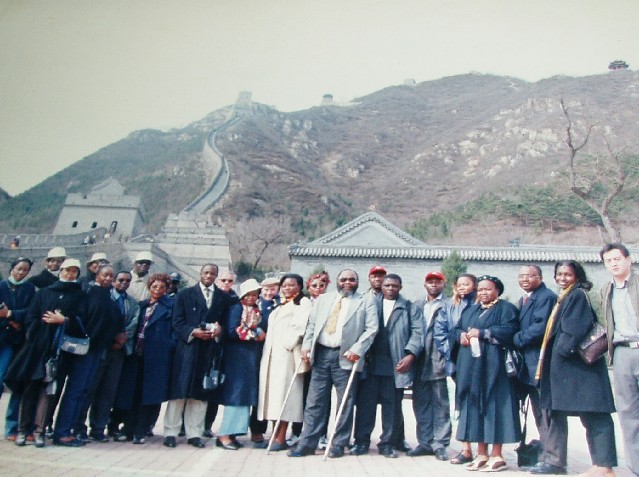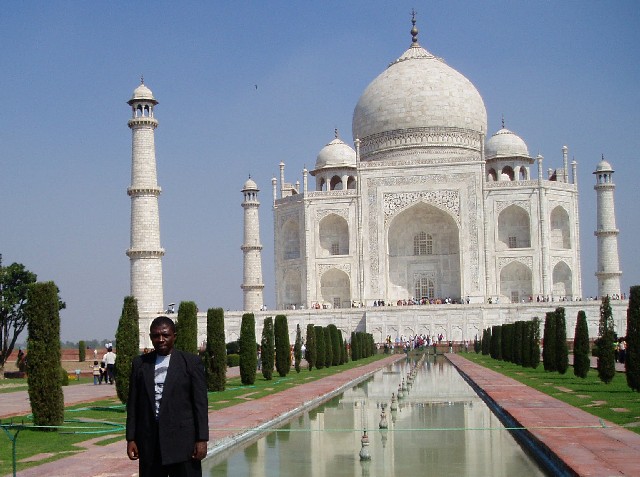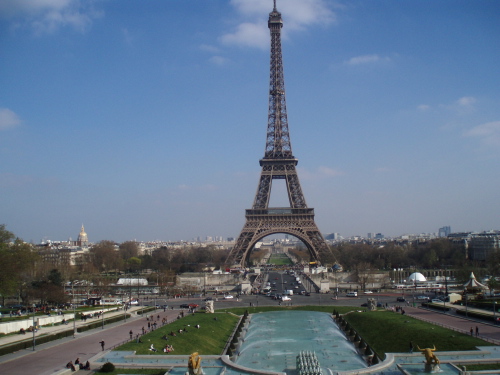8 Jul 2007
The verdict is out in the controversial vote for the seven man-made wonders of our world. Brazil’s statue of Christ the Redeemer, The Great Wall of China, Jordan’s Petra, India’s Taj Mahal, Machu Picchu of Peru, the Colosseum of Rome and Chichen Itza pyramid of of Mexico emerged the winners. The announcement was made in Lisbon, Portugal in the night of July 7th 2007.

Visitors from Cameroon at 'The Great wall of China in 2003 (photo: Njei M.T)
When I tried about 8 hours before the deadline to cast my vote online, I did not succeed because probably the website new7wonders.com was overwhelmed by visitors. Voting was done online, by text or telephone call to Europe. The selection of the seven from a choice of 21 short listed sites drew some criticism because it became an affair of those on one side of the digital divide. Also, there was no way of preventing some people from casting multiple votes or preventing countries with large populations from over shadowing others with ‘patriotic votes’ in favor of sites located in their countries.
The pyramids of Egypt (the last surviving member of the ‘seven wonders’ of the ancient world) obtained automatic inclusion into the new list without being subjected to a vote.
A spokesperson to the Organizers Tia B. Viering explained; “Because they are the only remaining ancient wonder, we are honoring that and making them an honorary finalist.” Adding; “The world will have eight wonders—one remaining wonder from the ancient world and seven new ones”.

India's 'edifice of love'-- The Taj Mahal also won the contest (photo: Njei M.T 2005)
The former list of the ‘seven wonders’ of the ancient world consisted of The pyramids of Egypt, the statue of Zeus, the Mausoleum of Halicarnassus, the Hanging gardens of Babylon, Temple of Artemis, the lighthouse at Alexandria and the Colossus of Rhodes. Greek observers around the 2nd century allegedly compiled the ancient list of ‘seven wonders’ that were all located in the Middle East. All, except the Egyptian pyramids have since been destroyed
.
By the close of the voting at the end of Friday, at least 90 million members of the digital community had cast their votes. It is not certain if the outcome would have been different had the voting not been restricted to one side of the digital divide. Keeping human imperfections aside, I personally think (based on my visits to The Great Wall of China and the Taj Mahal in India) that the selection was somewhat fair. (You can read about my visit to Beijing and the Great wall of China at this link; http://www.njeitimah-outlook.com/articles/article/2076041/27080.htm) and also my visit to the Taj Mahal in India at this link http://www.njeitimah-outlook.com/articles/article/2076041/30685.htm

Eiffel Tower in Paris: One eligible contender that lost. (photo: Njei M.T 2007)
The Swiss adventurer Bernard Weber launched the campaign to select seven “human-built” structures “in acceptable state of preservation” or the ‘new seven wonders’ in 1999. From nearly 200 nominations that came in, the list was narrowed down to 21 with the help of a panel of experts headed by a former UNESCO Director-General.
UNESCO has a list of over 850 Cultural Heritage Sites around the world, but the organization was not involved in the selection exercise.
The exercise attracted the attention of many governments and tour operators around the globe to the extent that some governments were openly campaigning and lobbying for votes for monuments located within their territories.
Njei Moses Timah
|